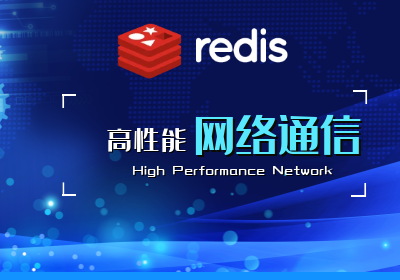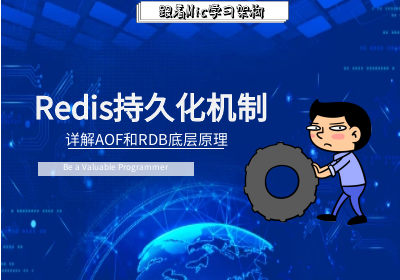盘点一下Redis中常用的Java客户端,或者咱们手写一个?
我们要在Java中操作Redis,怎么做呢?首先我们先来了解一下Redis Serialization Protocol(Redis序列化协议),这个是Redis提供的一种,客户端和Redis服务端通信传输的编码协议,服务端收到罅隙ihou,会基于这个约定编码进行解码。
打开Wireshark工具,对VMnet8这个网络进行抓包
增加过滤条件
ip.dst_host==192.168.221.128 and tcp.port in {6379}
使用RDM工具连接到Redis Server进行key-value操作,比如执行 set name mic
通过Wireshark工具监控数据包内容,如图3-3所示,可以看到实际发出的数据包是:
*3\r\n$3\r\nSET\r\n$4\r\nname\r\n$3\r\nmic
其中
*3*代表参数个数,set name mic, 表示三个参数。$3表示属性长度,$表示包含3个字符。
客户端和服务器发送的命令或数据一律以 \r\n (CRLF回车+换行)结尾。
图3-3
基于这样一个特性,我们可以自己实现一个Java客户端。
自定义Redis客户端
下面我们通过抓包相关的命令,了解Redis客户端的工作机制。
定义常量池。
public class CommandConstant { |
CustomClientSocket
CustomClientSocket用来建立网络通信连接,并且发送数据指定到RedisServer。
public class CustomClientSocket { |
封装客户端
public class CustomRedisClient { |
测试方法
public static void main(String[] args) { |
总结
你看,理解了原理之后,自己去实现起来发现并不难。
但是实际开发过程中,我们难倒也需要开发自己开发客户端吗?当然不用,官方推荐了以下三种客户端
| 配置 | 作用 |
|---|---|
| Jedis | A blazingly small and sane redis java client |
| lettuce | Advanced Redis client for thread-safe sync, async, and reactive usage. Supports Cluster, Sentinel, Pipelining, and codecs. |
| Redisson | distributed and scalable Java data structures on top of Redis server |
Jedis
Jedis是我们最熟悉和最常用的客户端。轻量,简洁,便于集成和改造。
简单使用方法
<dependency> |
public static void main(String[] args) { |
一般来说,我们不会使用单个Jedis连接,而是会使用连接池,Jedis提供了连接池的功能。
public static void main(String[] args) { |
Luttece
Lettuce是一个Redis的Java驱动包,大家常用的spring-boot-starter-data-redis中默认就采用的Lettuce。Lettuce是一个高性能基于Java编写的Redis驱动框架,底层集成了Project Reactor提供天然的反应式编程,通信框架集成了Netty使用了非阻塞IO,5.x版本之后融合了JDK1.8的异步编程特性,在保证高性能的同时提供了十分丰富易用的API。
简单使用方法
<dependency> |
Lettuce使用的时候依赖于四个主要组件:
RedisURI:连接信息。RedisClient:Redis客户端,特殊地,集群连接有一个定制的RedisClusterClient。Connection:Redis连接,主要是StatefulConnection或者StatefulRedisConnection的子类,连接的类型主要由连接的具体方式(单机、哨兵、集群、订阅发布等等)选定,比较重要。RedisCommands:Redis命令API接口,基本上覆盖了Redis发行版本的所有命令,提供了同步(sync)、异步(async)、反应式(reative)的调用方式,对于使用者而言,会经常跟RedisCommands系列接口打交道。
public static void main(String[] args) { |
和Spring Boot集成使用
Lettuce是Spring Boot 2.x 默认的客户端,替换了Jedis。集成之后我们不需要单独使用它,直接调用Spring的RedisTemplate操作,连接和创建和关闭也不需要我们操心。
引入依赖jar包
<dependency> |
application.yml配置文件如下
redis: |
使用方法
|
Redisson
Redisson是一个在Redis的基础上实现的Java驻内存数据网格(In-Memory Data Grid)。它不仅提供了一系列的分布式的Java常用对象,还提供了许多分布式服务。其中包括(BitSet, Set, Multimap, SortedSet, Map, List, Queue, BlockingQueue, Deque, BlockingDeque, Semaphore, Lock, AtomicLong, CountDownLatch, Publish / Subscribe, Bloom filter, Remote service, Spring cache, Executor service, Live Object service, Scheduler service) Redisson提供了使用Redis的最简单和最便捷的方法。Redisson的宗旨是促进使用者对Redis的关注分离(Separation of Concern),从而让使用者能够将精力更集中地放在处理业务逻辑上。
简单使用方法
引入依赖Jar包
<dependency>
<groupId>org.redisson</groupId>
<artifactId>redisson</artifactId>
<version>3.16.0</version>
</dependency>时间单节点连接和操作
public static void main(String[] args) {
Config config=new Config();
config.useSingleServer().setAddress("redis://192.168.221.128:6379");
RedissonClient redissonClient= Redisson.create(config);
redissonClient.getBucket("test").set("mic");
System.out.println(redissonClient.getBucket("test").get());
}
和Spring Boot集成
Spring Boot的集成方式。
<dependency> |
application.yml中的配置。
spring: |
使用方法。
|
另外一种配置方式如下
修改application.yml
spring:
redis:
redisson:
file: classpath:redisson.yml创建一个redisson.yml文件,内容如下
singleServerConfig:
address: redis://192.168.221.128:6379
#---------------------------------------------
# 连接空闲超时,单位:毫秒
idleConnectionTimeout: 10000
# 连接超时,单位:毫秒
connectTimeout: 10000
# 命令等待超时,单位:毫秒
timeout: 3000
# 命令失败重试次数,如果尝试达到 retryAttempts(命令失败重试次数) 仍然不能将命令发送至某个指定的节点时,将抛出错误。
# 如果尝试在此限制之内发送成功,则开始启用 timeout(命令等待超时) 计时。
retryAttempts: 3
# 命令重试发送时间间隔,单位:毫秒
retryInterval: 1500






